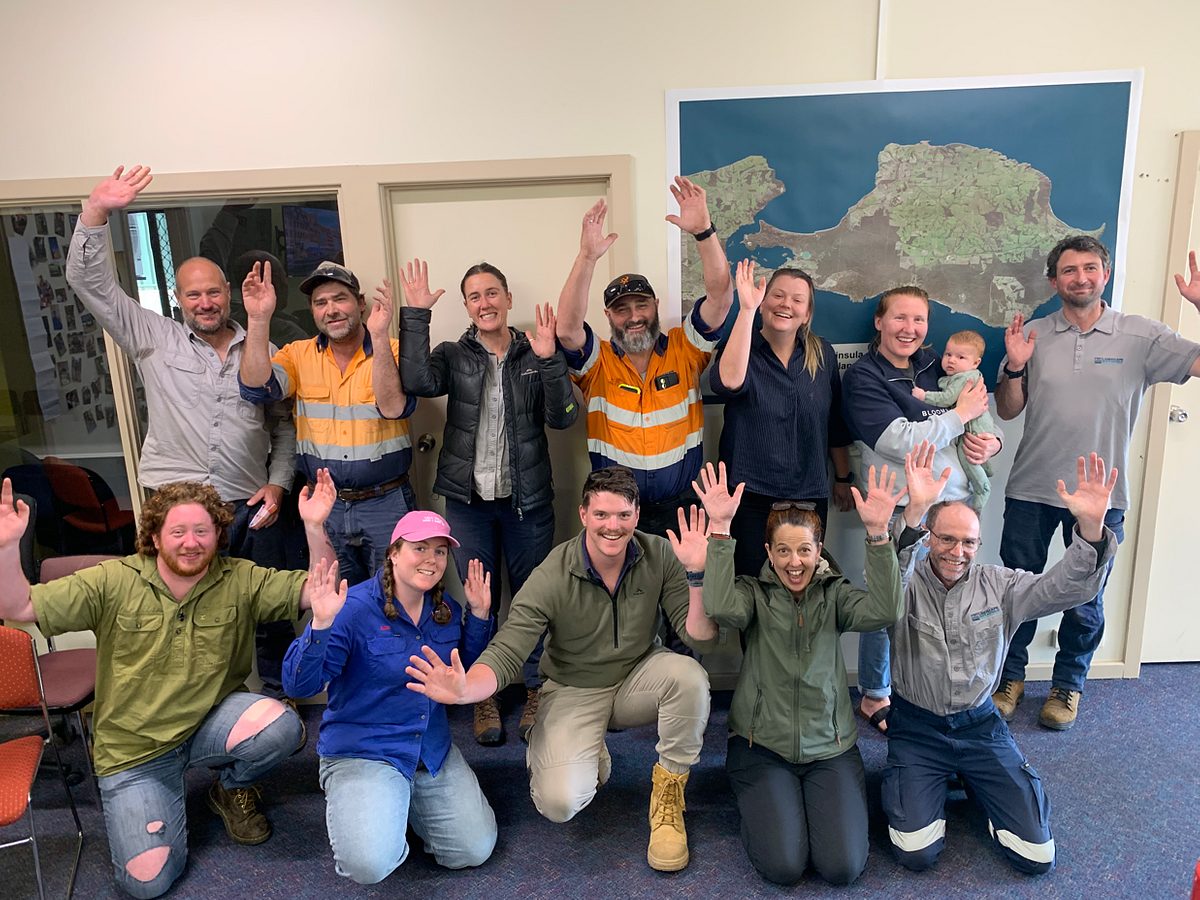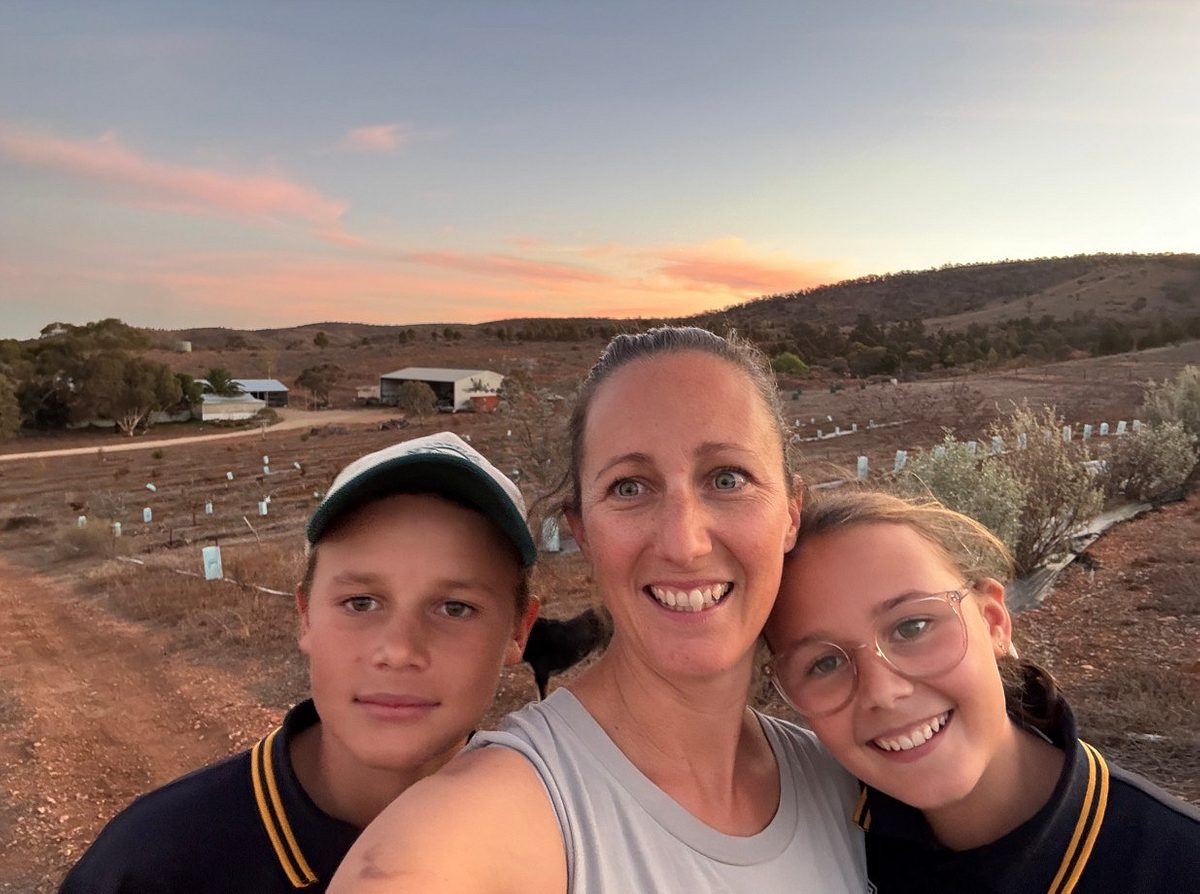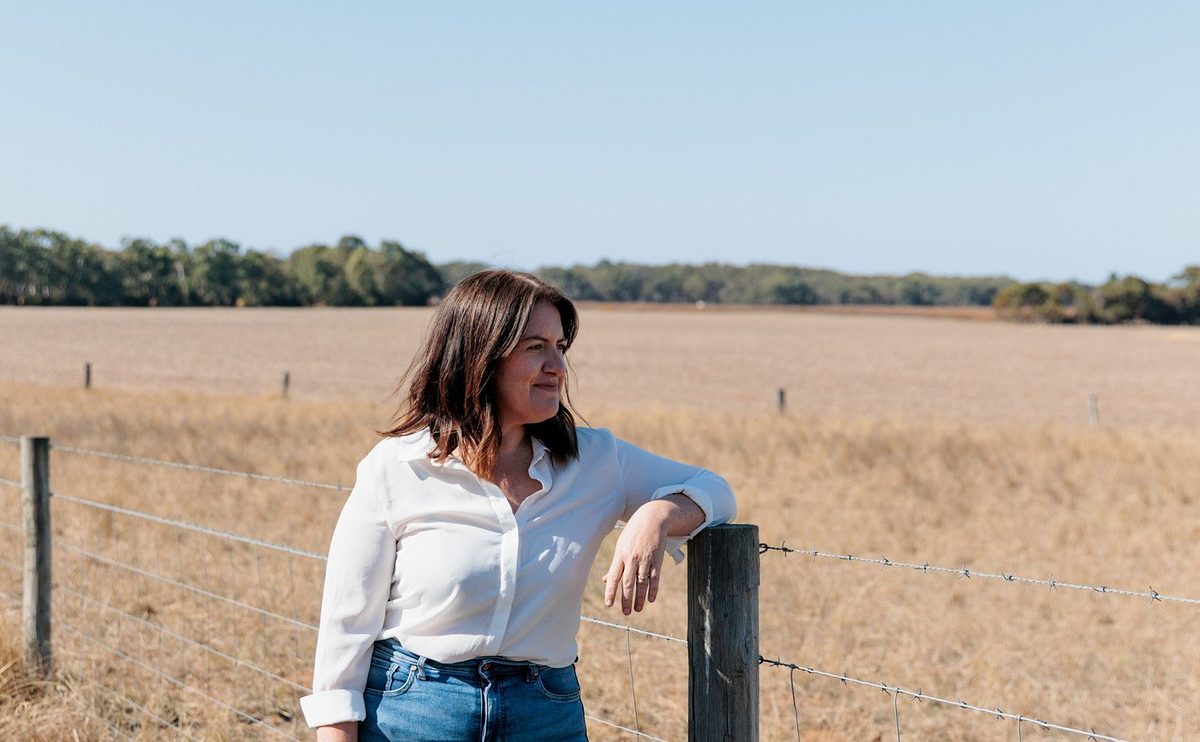November 2025: Dudley Peninsula Feral Cat Eradication Program community update
The Kangaroo Island Feral Cat Eradication team would like to sincerely thank the Dudley Peninsula community for their pivotal role in the success of the program. Your ongoing support, particularly in light of this year’s very dry seasonal conditions and late break in the season, has been instrumental.

This program update outlines our activities over the coming spring months as we continue to monitor and remove feral cats on the Dudley Peninsula, and lets you know what you can do to help us achieve total eradication of feral cats in the region.
SUMMARY OF ACTIVITIES
Since the program began in 2020, we’ve removed over 1,700 feral cats from the Dudley Peninsula and Pelican Lagoon.
The team has been busy over the winter months trapping and removing 196 feral cats from the Dudley Peninsula from January until September this year.
Using our AI-enabled cameras, we are detecting and closely monitoring feral cat activity across the peninsula. The map below shows cameras (blue dots) that have detected at least one feral cat in the last fortnight (no cameras have more than 5 detections). Activity hotspots include inland of Black Point, Dudley and Lesueur Conservation Park, Ian Road and around the feral cat exclusion fence at Pelican Lagoon.

What has been encouraging is that feral cat sightings on our cameras continue to remain at the lowest levels since the program began and are maintaining a stable trend following the winter trapping season.
As the weather warms up, we will be switching our focus to other control tools across the Dudley as goannas become more active making cage trapping more challenging. We will be using our cameras to identify and track individual feral cats, which provides valuable intel to focus the use of drones, thermal optics, targeting shooting with landholder permission.
In the coming weeks and as long as weather conditions remain cool, we will continue using feral cat detection dogs in areas where feral cat activity has been detected on cameras or in response to community sightings.
TEAMING UP WITH TRACKS IN THE SAND
The Kangaroo Island Landscape Board has partnered with Tracks in the Sand, a 100% Aboriginal-owned business specialising in vertebrate pest control, in the mid-north and north of the state, to share traditional knowledge and cutting-edge technology in an effort to deliver more effective landscape-scale feral cat control programs across South Australia.
We have been working with Tracks in the Sand owner Ronald Boland to share the tools and technology used on Kangaroo Island to eradicate feral cats with Nukunu Narungga young people on Country in the Southern Flinders Ranges, South Australia.

The Tradition and Technology pilot program, funded through the South Australia government’s Landscape Priority Fund, shares indigenous culture and knowledge, as well as tools and technology for invasive species, to build more impactful programs and provide connection, training and career pathways for Aboriginal people.
Tackling the issue of invasive species cannot be done in isolation; we need to draw on all our knowledge, resources and find ways to work smarter and more efficiently to protect our wildlife, empower our communities and benefit our economy.
Ronald and his team visited Kangaroo Island in May this year to learn about Celium trap alert technology, various trapping techniques, cat detection using AI-enabled cameras, data collection, cat detection dogs and thermal optics.
Our team visited the Flinders Rangers in July to assist Ronald and his team in setting up a Celium hub and traps, as well as installing cameras to detect invasive and native species on Nukunu Country.
This program has been a two-way learning experience for both parties; our team has learnt much about culture and traditional land management.
Ronald and his team’s returned to KI in October to help protect Australian sealions from the diseases that feral cats spread.
Nukunu and Narungga young people learnt how to set up a monitoring and control program from the beginning, installing and downloading cameras, building Celium hubs and establishing an array of traps in and around the Seal Bay sealion colony.
In November, we will return to the Southern Flinders Rangers on Nukunu country where we will learn about the traditional cultural practices used to track and control invasive species and protect native animals.
We are proud to support a program that provides career pathways for young Aboriginal people to learn about technology, connect to Country and together, control invasive species that harm our natural environment and economy.
Feral Cat Eradication team members Paul Jennings and Chantelle Geissler joined Ronald Boland as guest speakers at the Landcare Conference in the Gold Coast in late September, sharing their experiences and learnings with land managers across the country.
This video below captures the experiences shared in October 2025 during the implementation of a feral cat control program at Seal Bay on Kangaroo Island to protect the local sea lion colony from diseases spread by feral cats and H5 bird flu as part of the Tradition and Technology pilot program.
UPGRADES TO THE CAT EXCLUSION FENCE
You may have noticed that we have been upgrading the fence where it intersects Hog Bay Road. This has involved narrowing the gap and constructing raceways on each side of the road, which will allow wildlife to travel safely through, but at the same time give us the ability to detect, remove or deter feral cats attempting to breach the fence.
To prevent feral cat incursions, we are teaming up with researchers from the University of Newcastle and Bush Heritage Australia to undertake an Australian first audio deterrent trial on the island. Initial trials will determine how effective the audio deterrent device is and how to optimise its performance before installing at the cat exclusion fence in the future.
We have also been working with a contractor from Goolwa to extend the fence further into Pelican Lagoon and replace the existing inter‑tidal fence with non-corrosive materials that are both environmental sensitive and long lasting in the marine environment. Design drawings have been completed and we are now in the process of building the first module prototype for deployment.

IMPROVED TRAPPING TECHNIQUES
Our team has been working with Encounter Solutions and the Celium trapping alert technology on research and development. The Internet of Things (IoT) platform enables near real-time trapping alerts but also has applications for gate status (open or closed), alarm systems, monitoring and detection, weather stations, water levels of dams and trap alerts using AI.
Collaborating with our technology partners, we’re working to develop a fully automated cage trap that will make our program even more efficient at scale and will be easier for landholders to participate in our winter trapping blitzes. One of our main issues with cage traps is seasonally high off-target captures, this is particularly evident in summer as goanna activity increases.
To avoid this, the AutoCage will allow us to remotely close and open traps during the daytime hours in summer, which will not only reduce off-target captures, but increase feral cat captures as cages will be open throughout the night when cats are most active at this time of year.
The traps will also be auto-luring, which will save time taken to manually bait traps. We are aiming to trial the first prototypes before the end of the year and will keep you updated with our progress.

INCREASE SIGHTINGS OF ENDANGERED AND THREATENED SPECIES
We are excited to report that Dudley landholders have increasingly spotted native wildlife, including bush stone-curlews, hooded plovers, and juvenile goannas, thanks to our intensive cat control efforts.
These sightings are particularly encouraging as native bird species, such as little penguins, begin their breeding season during spring and summer.
Additionally, we have made a number of southern brown bandicoot sightings across the Dudley Peninsula in the last year, including three sightings in Dudley Conservation Park and two just east of the feral cat exclusion fence.
Southern brown bandicoots are common west of Parndana, but occur only in low numbers on the Dudley Peninsula. The recent sightings provide hope that the species is persisting on the Dudley Peninsula.

TEAM MEMBER UPDATE
Meet Indi, the newest member of our team. Indi is a six month old Bluetick Coonhound, who is learning the ropes from fellow cat detection dog pack members Jager, Murra, and Spur. Indi detected her first feral cat over a month ago at Michael Pengilly’s property at Smith Bay and is proving very enthusiastic in her duties.
In addition, we recently received funding to recruit new team members to help with trapping and technology who we will introduce to the community in coming months.
Most of you would know Cheryl-Ann Monks who has been working with the program since it began. Cheryl-Ann is taking a leave of absence for six months to follow her passion for teaching, delivering a series of vertebrate pest management courses in Western Australia. We wish her well in her travels and look forward to welcoming her back to the program in April next year.
We welcome some new members to our team who will be busy working to trap and monitor feral cats on the Dudley Peninsula over the summer months. Feel free to say G’day to Felix, Suzi, Tom, Tracey and Andrew if you see them on the road.

WHAT YOU CAN DO TO HELP
We thank community members who have reported cat sightings via the Feline Hotline over winter. The information you have provided has led to several captures.
Please report any sighting of feral cats, cat tracks or suspected cat kills to the Feline Hotline on 0459 952 830 as soon as possible. We are particularly interested in the time and location of the cat sightings so this information can be passed directly to our team.
WHERE CAN I LEARN MORE ABOUT THE PROGRAM?
It’s shaping up to be a very interesting year for feral cat eradication on KI. We will provide a further update closer to the 2026 winter trapping blitz.
For a complete round-up of the program's 2025 results and achievements please visit the KI Landscape's website or call us during office hours on (08) 8553 2476.

WHY ERADICATE FERAL CATS?
Feral cats are one of the greatest threats to Kangaroo Island’s unique wildlife. They prey on native birds, mammals, reptiles, and invertebrates — many of which are found nowhere else in the world. Eradicating feral cats will help protect the Island’s most valuable and endemic species, several of which are already threatened or endangered on mainland Australia, including:
- Kangaroo Island dunnart (Sminthopsis griseoventer aitkeni), also known as Sminthopsis fuliginosis aitkeni — Endangered
- Kangaroo Island echidna (Tachyglossus aculeatus multiaculeatus) — Endangered
- Southern brown bandicoot (Isoodon obesulus) — Endangered
- Hooded plover (eastern) (Thinornis rubricollis rubricollis) — Vulnerable
- Little penguin (Eudyptula minor)
Feral cats also spread livestock diseases such as Sarcocystis and Toxoplasmosis, which impact primary production and profitability, causing economic losses to the Kangaroo Island sheep industry.
By removing feral cats from Kangaroo Island, we can protect native wildlife, support local producers, and make sure that both biodiversity and agriculture continue to thrive for generations to come.




